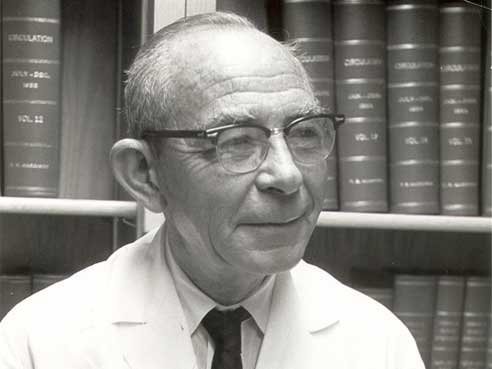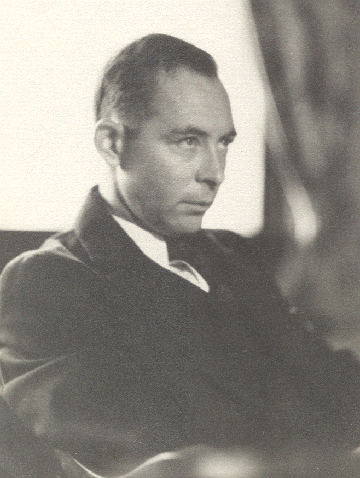 Tinsley R. Harrison, M.D.by Dr. Thomas Ruli, Jr., PGY-1
Tinsley R. Harrison, M.D.by Dr. Thomas Ruli, Jr., PGY-1
Toward the end of my medical school career, I was given a paper by Dr. Tinsley Harrison from one of my mentors, Dr. George Karam (former graduate and chief resident for UAB’s internal medicine residency program). The paper was published in the Annals of Internal Medicine and highlights what Harrison described as the “three roots” of internal medicine: the science, the art, and the priesthood of medicine. The “science” is the knowledge base, the “art” is the bedside skill, and the “priesthood” refers to the idea that the “physician him/herself is the treatment”. I remember reflecting on the passage in preparation for the beginning of my intern year at UAB. I had spent the last four years in medical school trying to cram as much knowledge into my head as possible, and I had done my best to become as proficient at physical exam skills as I could at that stage in my career. However, not once during medical school did it cross my mind on how the “physician himself” could be the treatment. What did that mean?
Now, with the end of my intern year quickly approaching, I find myself reflecting on my first year as a physician. The year has been a whirlwind, and there have been innumerable learning opportunities. By seeing, examining, and reading about my patients, I have had the opportunity to grow in both my knowledge base, the “science”, and bedside skill, the “art” (still with much more room to grow!). On further reflection, the most lasting learning opportunities from the year have not been related to a unique disease, patient presentation, or lecture. Rather, the most lasting learning opportunities have been from talking, listening, and learning from patients and families at their bedsides. I have come to realize that this is where Harrison’s “third root”, the “priesthood” of medicine, is most evident.
Throughout the day in the hospital, it is so very easy to get caught up in all of the daily tasks of patient care: the to-do lists, the orders to follow up on, and the often seemingly endless number of notes to write. Though I do not want to downplay the important role these tasks play in regard to patient care, they are not the ends, but simply the means. What cannot be lost though is that the seemingly simple act of spending time and listening to the patient is one of the most important things we do on a daily basis. Sometimes, all a patient wants to feel is that he or she is being heard. Sitting at the bedside, listening to concerns, and reassuring patients can sometimes do more than any lab test, imaging study, or prescription. This reminds me of a quote that was recited multiple times during my internal medicine clerkship in medical school by Dr. William Osler, “The good physician treats the disease; the great physician treats the patient who has the disease.” It is no surprise that Harrison’s “three roots” encompass Osler’s approach to medicine, because Harrison’s career was greatly influenced by Osler (Harrison was known as “the Oslerphile physician”). While having a strong medical foundation is necessary to be a good internist (mastering two of three roots, the “science” and “art”), it is spending time and getting to know your patients (the “priesthood” of medicine) that makes a great internist. To connect with a patient in the hospital or clinic, in a setting where they can be vulnerable, comes with immense responsibility, but it is also a great privilege. Hopefully, we are able to slow down and find time in our hectic days to pause before walking into the room with our patients and remind ourselves to approach each patient with intentionality; taking time to learn about them and listen to their concerns without judgment, so we can be an advocate for them. In doing so, we are embodying the “priesthood” of medicine that Harrison referred to.
 Dr. Harrison during his early years at Vanderbilt University. Exact date unknown.
Dr. Harrison during his early years at Vanderbilt University. Exact date unknown.
Armed with the three roots, we can be internists that care for our patients holistically. As Harrison stated, “The patient is human, fearful, and hopeful, seeking relief, help and reassurance. To the physician, as to the anthropologist, nothing human is strange or repulsive…The physician cares for people.”